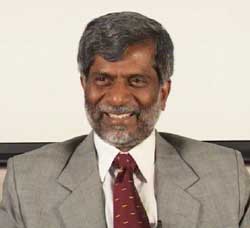AeroIndia 2009: LCA programme over the hump - 2nd gen to 4+, says ADA director, Dr PS Subramanyam
06 February 2009
From 1983, when an indigenous fighter development programme was launched with an attempt to develop second generation technologies, to 2008 when the programme has successfully developed 4+ generation technologies the LCA Tejas has come a long way, says ADA director, Dr PS Subramanyam.
What are the major state-of-the-art aircraft technologies used on the LCA?
|
Another technology that has been developed for the programme is called digital avionics technology, or a glass cockpit.
Yet another technology where we have really bridged the gap is in the area of composites.
I have mentioned these four state-of-the-art technologies because when we started the programme many foreign consultants on the programme said this country cannot catch up with these technologies at this point and suggested we go back to older technologies. It was then that Dr APJ Abdul Kalam, who was the director general of the organisation, who said no. He told us he had confidence in us and that we could go ahead with developing these technologies.

